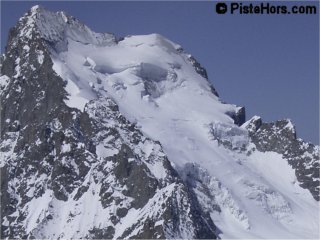
Technique > Glacier Travel for Skiers and Snowboarders
Glacier Travel for Skiers and Snowboarders
Glaciers cover a lot of the French Alps above 2800 meters. Larger glaciers may even flow to quite low altitudes, around 1500 meters, although climate change means that most glaciers are currently in retreat. A glacier is essentially a river of moving ice. If you think about a river for a moment the principal dangers are rapids and falls, these occur where the underlying terrain is steeper or broken. Glaciers behave in the same way, forming crevasses and seracs at these points. Along with ice these are the three principal dangers facing skiers and snowboarders who wish to travel on glaciated terrain.

A serac is a large ice block that forms where a glacier encounters a steep slope or cliff. As the ice flow drops over the lip blocks of ice break away and will eventually fall. The danger is to travellers passing beneath seracs. They fall at random intervals although as the glacier is warmed, either in the spring and summer months or in the afternoon its flow increases which in turn increases the number of serac falls. The serac can either injure or kill travellers passing underneath or trigger an avalanche. The only mitigation is to avoid heavily seraced routes, such as the Bossons Glacier route to Mont Blanc or to traverse the danger as quickly as possible with some spacing between the group members.
Glacier ice is a danger to skiers or snowboarders as they descend. It may not be visible from above or may be partly hidden by a thin layer of snow. On even quite low slope angles it can provoke slides. Where the slope ends in a cliff or rocks these can be very serious. It is worth noting that modern, wide and shaped skis provide less grip than older straight skis on hard surfaces. For up and down routes ice can be noted on the climb. For traverse type routes travellers should take extreme care when descending slopes, particularly at altitude or on slopes that catch the sun. If the slope is too dangerous it may be better to choose another route or fit crampons and descend on foot although this is not a pleasant option.
<< | Technique | Starting Ski Touring >>